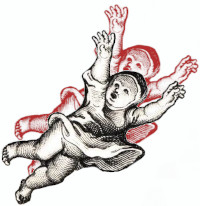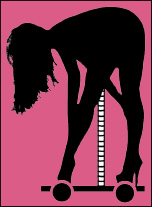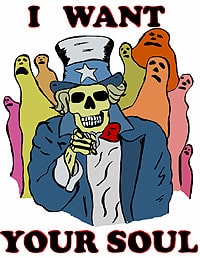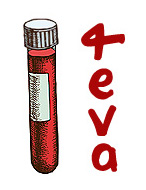“Given these two options and the historical significance of both sports on the formation of men which do you believe is the better one for training men and if you had to pick one to start a young man on which would you choose? Wrestling is arguably the oldest sport known to man but you have written frequently of boxing being the tool to train military men.
“From personal experience being a wrestler I see wrestling as more physically demanding and easier to teach/use that dominating factor men have naturally as opposed to boxing which I see as more technically demanding and nuanced when it comes to the domination factor. Thoughts?”
-Sean
“The ultimate origin of the ferocious competitiveness of the Greeks—in human biology? an inheritance of Indo-European codes of masculinity?”
-Soldiers and Ghosts, J. E. Lendon
There is a hint to the ultimate answer in this quote above, from Mister Lendon’s brilliant book, which I am rereading in support of this project on the roots of Indo-European masculine culture.
Sean, this is a question that deserves far more time and space than is being dedicated to it here, and is at the root of A Dread Grace. I will frame this here as a preface and, by late spring I expect the complete answer to be posted under this tag.
All masculine cultures I have studied, from around the world, have had some kind of wrestling tradition. Evidence of wrestling is only 20,000 years old, and does precede any evidence of dueling. It comes into being at the same time that our first evidence of organized warfare is found in the same region of Europe. I hypothesized in The First Boxers that wrestling in its ritual adult form was a human adaptation to warfare, a way to settle disputes within the group in a non-lethal way, adopted at the very time that the mechanical arms race was really heating up with the bow and arrow used to hunt other humans.
In terms of combat value any MMA fan knows that grappling is a must have for unarmed combat and any weapon fighter can tell you how important the ability to keep you feet after a collision with an opponent is in dueling.
Wrestling is a universal masculine tradition and is, in part, the basis for boxing.
The ancient Greeks taught wrestling to their boys as a requisite art.
Boxing is a unique Indo-European art, and appears—always—after the introduction of the light taxi chariot, which is the vehicle that facilitated battlefield dueling. Boxing is preceded by the first evidence of dueling by about 1,000 years—pretty close in the big scheme of things. It is my opinion that boxing is a compromise between wrestling and dueling that came into being when tribes amalgamated into nations and required a sub-lethal dueling surrogate. The ancients debated the purpose behind boxing, as it was a counter intuitive art and was—unlike wrestling and dueling—unique to their culture at the time. I see no coincidence in the fact that the Аrуаn peoples who have dominated warfare worldwide—with the sole exception of the Mongols—practiced boxing, and also developed a ground-taking notion of warfare that went far beyond mere killing or plundering. Some see this close combat ethic as originating in close-in big game hunting.
Boxing was thought by ancients and colonial era men to be “the white man’s art.” Indeed, when Melville and his friend were marooned among the Typee they astonished their hosts—extremely warlike cannibals who had already defeated European invaders—with a display of boxing. When Astyanax, a pentathlete and MMA fighter journeyed to Persia, the Persian King wanted to see him box, rather than do what he was famous for, and he KO’d seven Persian soldiers before dinner.
Boxing is the signature masculine art of the Indo-European Man.
Boxing is, in warrior terms, an unrealistically narrowly focused contest using the fists as surrogate weapons at the most deadly range of combat, which is knife range. Boxing and knife-killing range are precisely the same. Your fist will reach the exact distance as will a long ten inch knife held in your fist in a true grip, or as far as a 14 inch knife held in a reverse grip. Boxing teaches us to close with the opponent into the most unnatural range, the range at which the great cats would tear us limb from limb if they got a hold of us without our spear.
The ancient Greeks saw boxing and wrestling as equal arts, with wrestling taught first and practiced longer, as the sage art. Indeed, in the later part of antiquity, when the stars of the combat circle were gladiators, and boxers were armed with gauntlets, and MMA fighters garnered the fame previously had by first the wrestler and later the boxer, it was the wrestling champions that served as the administrators of the athletic guilds and looked out for the boxers in a quasi management role.
In antiquity there was no such thing as “a boxer” or “a wrestler.”
The greatest boxer of all time was Tisander of Naxos, who won four Olympic Crowns. That is a modern perspective.
To the ancients he was, Tisander of Naxos who won four crowns with the fist at Olympia.
Like every other ancient boxing champion, Tisander was a wrestler, and in Greek boxing, all wrestling was forbidden, a simple clinch bringing a vicious whipping from the judge armed with his forked rod.
A man is expected to wrestle.
A hero does something more, boxing, pankration, lifting stones, fighting in the front rank of the Phalanx, serving as an emissary to the Tyrant of all Asia.
So, in my view, Sean, wrestling should be taught first, beginning as early as possible, at five.
The Spartans started their boys at seven.
I think boxing should wait for puberty, which was the Greek view as far as I can tell.[1]
Pankration [MMA] was for men only, except in Sparta and in the Roman period.[2]
Wrestling is a must for a man.
Boxing is a rite of passage, a place to face his fears and forge his spirit.
The boxer was regarded, in epic poetry, to have taken on a “dread” spirit not a fury or a rage, but a singular calmness that was feared for its own sake.
Notes
[1] Boys did not box until age 12 in ancient times, and may have begun as a rite of passage for the boy as a ritual spiritual equivalent to the girl’s first bleeding, as both boxing and menstruation were taboo and had to be sanctified. The Indo-Europeans, as with many primitive peoples, seemed to hold bloodletting with the hand and the striking of the face as taboo. Even today, in Baltimore City, as savage as it has gotten, a man generally won’t stab or shoot a rival over a personal dispute unless he was first struck in the face.
[2] Pankration—or MMA—was also an Indo-European first, which I classify as a type of boxing after the British tradition, and will be discussed in due course.











